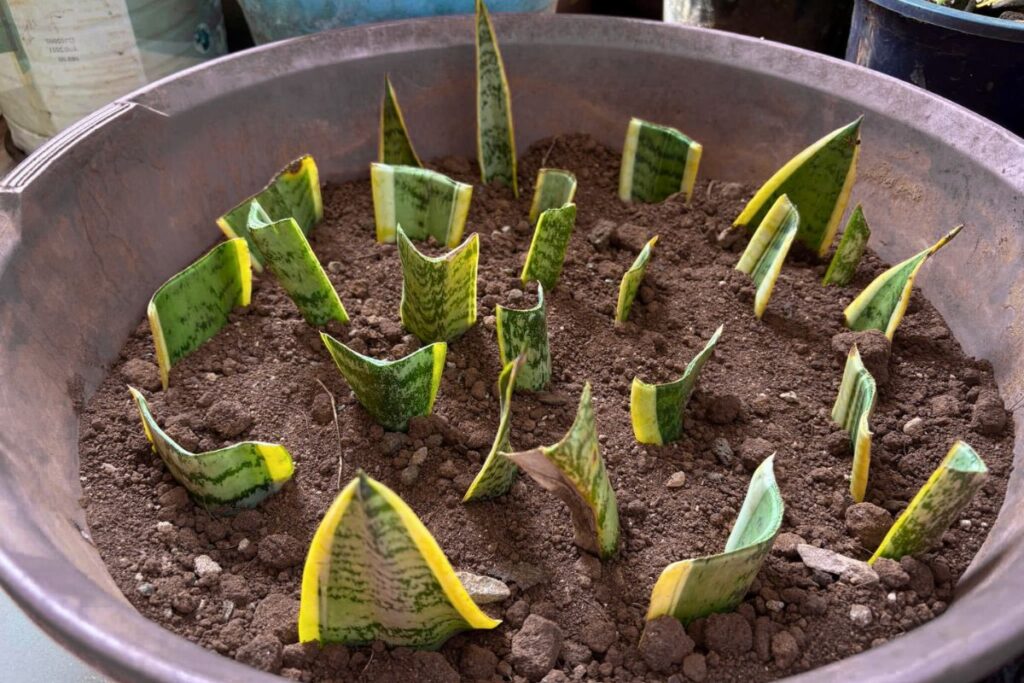You’ve probably admired those tall, sturdy snake plants in someone’s home and wondered how to multiply your own collection without spending a fortune. The good news is that snake plants are surprisingly forgiving when it comes to propagation, making them perfect for beginners who want to expand their green thumb skills. Whether you’re working with a single leaf or an entire plant, there’s a propagation method that’ll work for your situation and schedule.

Contents
Understanding Snake Plants and Their Benefits
When you’re looking for the perfect low-maintenance houseplant, snake plants stand out as one of the most reliable choices available. You’ll find these hardy beauties, also called Mother-in-Law’s Tongue, thrive in nearly any condition from low light to full sun.
Snake plant varieties offer impressive air purification benefits, removing harmful compounds like benzene and formaldehyde from your home. They’re part of the Dracaena genus and tolerate poor soil conditions exceptionally well.
You can’t go wrong choosing theseforgiving plants, whether you’re a beginner or experienced gardener seeking reliable greenery.
Essential Tools and Materials for Propagation
Success in snake plant propagation starts with gathering the right tools and materials before you begin cutting. You’ll need sharp garden shears or a clean craft knife, which should be disinfected to prevent disease transmission. A small pot and marker are essential for tracking your cuttings.
Soil selection matters considerably for drainage success. Choose a succulent or cacti potting mix, or create your own by combining regular potting soil with perlite or river sand. Propagation timing during spring and summer yields better results when plants actively grow and recover faster.

Leaf Cutting Propagation Method
Although several propagation methods exist, leaf cutting remains the most popular technique for multiplying your snake plants. Start by selecting a thick, mature leaf showing excellent leaf health—avoid any with yellowing or damage. Remove the entire leaf close to the base using clean, sharp shears.
Here’s where cutting techniques matter most. Slice your leaf into 4-inch sections, marking each piece’s top with a pen to maintain proper orientation. Plant these cuttings in well-draining soil, burying them halfway until they stand upright. Water thoroughly, then wait patiently for new growth.
Water Propagation Technique
For those who prefer watching roots develop, water propagation offers a fascinating alternative that’s equally effective. You’ll want to remove an entire leaf at the base, just like with cuttings. Use a clear vase filled with water, adding stones or pebbles to hold your cutting upright and stable.
Place the vase in bright, indirect light where you can easily monitor progress. This method creates an attractive aesthetic display while allowing you to observe root development firsthand. Once roots reach 2-3 inches long, you can transplant into soil with confidence.
Division and Pup Separation Method
When your snake plant has grown large enough to crowd its container, division becomes the most efficient propagation method available. You’ll notice pup growth emerging around the base, creating perfect opportunities for separation. Division timing works best during spring or early summer when plants actively grow.
Use a sharp, clean knife to carefully separate sections at natural division points. Each piece needs healthy roots and foliage attached. Gently shake off excess soil to see root systems clearly, then cut through connecting rhizomes. Plant divisions in fresh potting mix immediately after separation.
Post-Propagation Care and Maintenance
Once your snake plant cuttings are nestled in their new homes, proper aftercare determines whether they’ll thrive or struggle. Post propagation watering should be thorough initially, then scaled back considerably. Water only when the top inch feels dry, typically every 2-3 weeks. Overwatering kills more cuttings than neglect ever will.
Temperature management keeps your babies happy. Maintain consistent warmth between 65-75°F, avoiding cold drafts and sudden changes. Place them in bright, indirect light where you’ll remember to check on them. Skip fertilizer for the first month—newly developing roots can’t handle the intensity yet.
Optimal Growing Conditions for Success
Although snake plants tolerate neglect better than most houseplants, they’ll reward you with faster growth and healthier appearance when conditions hit the sweet spot.
For ideal light, position your propagated plants in bright, indirect sunlight. Direct sun can scorch leaves, while too little light slows growth dramatically. A spot near an east or west-facing window works perfectly.
Soil preferences lean toward well-draining mixtures that prevent waterlogging. Use succulent potting mix, or create your own by combining regular potting soil with perlite or sand. This drainage prevents root rot, the number one killer of snake plants during their vulnerable propagation phase.
